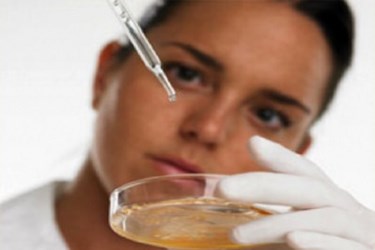4 Reasons To Implement Rapid Pathogen Testing
By Laurel Maloy, contributing writer, Food Online

In short, you can save time, money, resources, and in a worst-case scenario, save your brand’s reputation
Pathogen testing is a rapidly-changing field and companies who are trying to keep up with the latest and greatest developments are having a hard time doing so. With an increased focus on proactive prevention of foodborne illnesses, developers are scrambling to gain your company’s business. But, that’s not necessarily a bad thing. In fact, it is a good thing, though you may be overwhelmed with the increased attention, ever-changing methods, and the wealth of information you are being bombarded with. As rapid testing methods improve, testing is expected to move from the food laboratory to the production line, in its entirety. Genome data-bases, as a means to trace and isolate, will become the norm as testing methodology and technology evolves.
In the last decade, innumerable advances have been made in the fields of automation and computer technology in regard to immunology and molecular biology. This has resulted in more instantaneous, accurate, and convenient methods with which to test on-site and on-shift. The quantitative detection of microorganisms, as well as the ability to simultaneously detect more than one pathogen or toxin, with one testing method, has made on-site testing affordable and sensible. If you haven’t already explored these options, consider the fact that you can often have results in hours, not days. This takes the outside lab, and its associated costs, out of the equation. Consider the costs of outside processing, as well as the time and logistics involved when making a decision to switch to rapid testing methods. With rapid test methods, your product will not be sitting in the warehouse, counting down on its shelf-life, while you wait for test results.
Why Rapid Testing?
- More samples can be screened, resulting in locating the root causation more quickly and efficiently, reducing down time, and preventing further product contamination
- On-site, on-shift testing may prevent the affected product from ever leaving the plant, which means no outbreak, no bad press; just the ability to take care of the problem in house
- Rapid pathogen detection can reduce the impact testing has upon a facility and the associated costs, such as testing and holding, missed deadlines, delayed shipments, additional product handling, and retrieval of already released, contaminated product
- Investigators can more quickly respond and link specific case strains when employing rapid testing in concert with genetic-based testing and access to genomic data bases
Ready-To-Eat (RTE) foods are considered to be at the highest risk for both contamination and the spread of foodborne illnesses simply because they require, for the most part, no further preparation. There is no cooking or freezing that can potentially kill bacteria or pathogens on the product, making it even more important for testing prior to distribution. Chicken-Caesar Salad recalled at Sam’s Club is just one example.
The next largest source will be fruits and vegetables, due to the adulteration that can occur in the field, transportation, and processing facilities through contaminated water and soil sources. Fruits and vegetables with soft, hard to wash skins are considered highest risk. Keep in mind that Listeria cannot easily be washed away and is just as easily spread. The Listeria outbreak traced back to Jensen Farms in Colorado is a prime example of Listeria gone mad.
That is followed by poultry and meats, often due to improper handling at the retail or consumer level, though that is not always the case. In these instances, rapid, on-site, on-shift testing at strategic points along the processing line will serve to validate your safe handling procedures while aiding in the identification of the reason and/or source of the contamination.
You will hear science chatter such as, “…the application of biosensors like bioluminescence sensor, bio-analytical sensors utilizing enzymes, electrical impedometry and flow cytometry….” Modern testing methods utilize biotechnology techniques, such as PCR (Polymerase Chain Reaction), RFLP (a.k.a. rif lip or Restriction Fragment Length Polymorphisms), DNA, and ELISA (Enzyme-Linked Immunosorbant Assay). However, it is not necessarily essential for you to be able to understand these varied applications. What is important is that you seek the advice of someone who can. This person should be able to explain the different processes, their advantages and disadvantages in relation to your particular food-processing operations. Delegate someone, or take it upon yourself, to get as much information as possible in order to make the best-informed decision for your plant.
